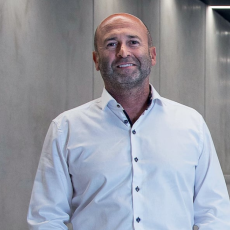What role does Hammerforce play in the industrial market?
Hammerforce is a valve and valve actuation IP company, providing a green-powered solution that supports the ESG efforts of multinational global companies. By adopting our disruptive technology, major players can reinvent themselves, becoming important contributors to sustainability. The IP that we developed is now divided into force and flow applications that are fit for various situations, from needleless injections, toys, launching drones, and nail guns to innovative valve technology which accelerates the growth of hydrogen energy applications
What are the origins of your force technology?
Our innovative force technology was born out of solving the problems of the portable nail gun market. As soon as we identified the weak spots of the portable nail gun market, we started to think about alternative solutions that could be both economically sound and overcome the harmful environmental impacts on people and the planet.
The powering system of portable nail guns has always been a hurdle because it requires either combustion or batteries and in the context of the green transition, these two solutions have become a delicate topic. The combustion-based models' valve actuation depends on ignition and, besides requiring electronics to spark it, the chemical reaction results in CO2, carbon monoxide, and carbon residue that builds up in the gun. In addition, these nail guns need to be cooled off with an electric fan, the gas canisters usually remain buried inside building sites, and they are inefficient if they get wet. On the other hand, with lithium becoming a valued yet increasingly scarce resource, the battery-powered nail guns market will suffer in the future. In short, it became obvious that we needed to think of a better solution to continue to use portable nail guns.
We needed to find a way to use air to create a force strong enough to actuate a nail gun. Hence, we came out with a fast-acting valve technology that uses compressed air to produce the energy needed to activate the nail gun. With less than one gram of compressed air, we were able to create over 100 joules of energy, proving once again that less input to get more output is the cornerstone of efficiency. The result of our patented fast-acting valve technology was an ergonomic, purely mechanical nail gun, with no electronics or batteries, powered by a refillable fixed cannister of compressed air.
How long will the high-compressed air canister last in comparison to a battery-powered alternative?
The battery guns are not only heavier, but they also require the workers to always have a charger close by. Our technology enabled our gun to be ergonomic; maximizing efficiency, comfort, and safety. The built-in canister could be filled up in five seconds enabling builders to be cord-free and have plenty of nails to do the job fully mobile. It created total portability for builders while still remaining economically viable but most importantly, delivering sustainable environmental benefits.
In a market that seeks sustainability, our underlying technology enabled us to come up with a nail gun that increased productivity, and reduced waste, while enhancing safety.
What is your plan for the commercialization of this new nail gun prototype?
Compressed air technology is not a new concept, but it has not been largely used to manufacture such products. Thus, to be able to further develop and commercialize our nail gun, we signed a long-term licensing deal with a leading global construction company that will commercialize on a global scale, and we will remain involved because of our unique partnership model.
What are the main challenges that you encountered while trying to get your product to the market?
We are opportunity-rich and resource-poor, so scaling this business globally has its challenges - the biggest issue being the opportunity cost. In order to get our innovation from concept to product, we started by first understanding the economics of the industry, and we then devised the best ways to approach companies, considering the supply chain issues and the overall customer dynamics. Factoring in all the challenges companies deal with, we tried to engineer a solution that could give them a competitive advantage. Instead of simply listing all the ESG advantages of our product, we prototyped the solution and demonstrated that it is economically viable. Big companies tend to work on incremental projects and are risk-averse, so to catch their interest, we must take note of the resource allocation and bring something extra to the table. An R&D cycle and full commercialization, for example, can take up to ten years, but by including these companies in the process, we can shave off many years, therefore presenting a much more appealing partnership plan. When risk is reduced and the economics look bright, even big, conservative players get interested in innovations that can give them the extra ESG benefits, and this applies to hundreds of applications across a wide range of global industries.
Stemming from the same valve concept is the flow technology. What are the main characteristics that define it?
The same principles of the force fast-acting valve technology can disrupt and reinvent the process flow valve industry. Our current focus is on the isolation valves sector which is an industry worth 70 billion annually. The innovation enables a step change significant reduction in the actuation force required to turn the valves on and off. Together with a decreased size and weight of the whole system, this improvement translates into a smaller total cost ownership that ultimately has a huge impact on ESG across the whole chain. The first prototypes we designed are in the space of energy transition; hydrogen and LNG. The hydrogen industry is developing especially rapidly with shifting standards that are hard to follow. In this rapidly evolving environment, valve companies do not have enough room for innovation, but our technology enables the growth and development of hydrogen applications across industries with a solution that is highly applicable and can deliver significant cost savings.
Besides these automated actuated valves, the other half of the world’s valves are manual and require human intervention, many times in dangerous contexts that lead to fatalities. The reduction of the force requirements and the significantly lower cost means automated valves are a viable solution to replace manual valves. This shift will lead to a new market where workers are less likely to suffer injuries, and the risk of massive oil leaks, due to human error, is heavily reduced.
How can ESG principles be better integrated by companies in their business plans?
One of the biggest problems with ESG is that it has been driven by governments and regulations. I am a firm believer that subsidies and regulations lead to inefficient markets.
If the private sector does not identify and articulate the clear economic benefits in adopting all these sustainability measures, ESG will remain a buzzword.
While creating a government-led push to raise awareness is not a bad idea, the change must come from within, sparked by the financial rewards that come directly from the market, alongside delivering better environment and social outcomes. In the private sector with no subsidies, if the economics do not stack up it will make it harder to maximize the full benefits of ESG values.
Hammerforce’s vision is to keep on applying its technology across multiple global industries and applications to deliver ESG benefits in an economically viable way.





